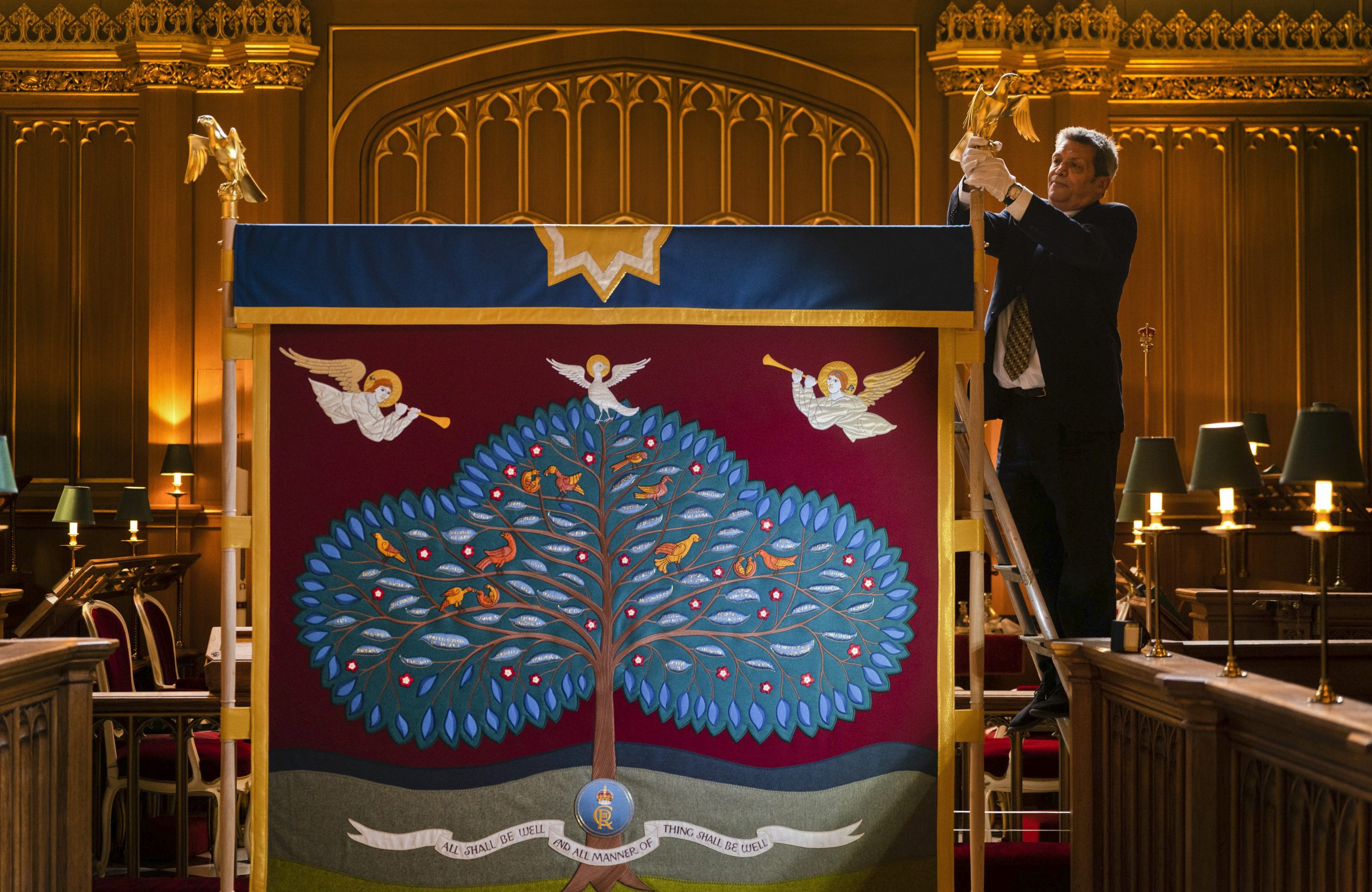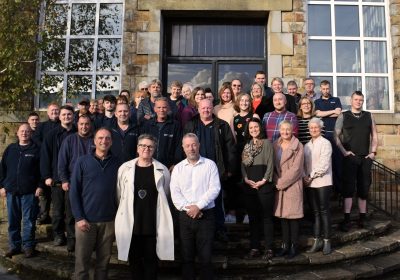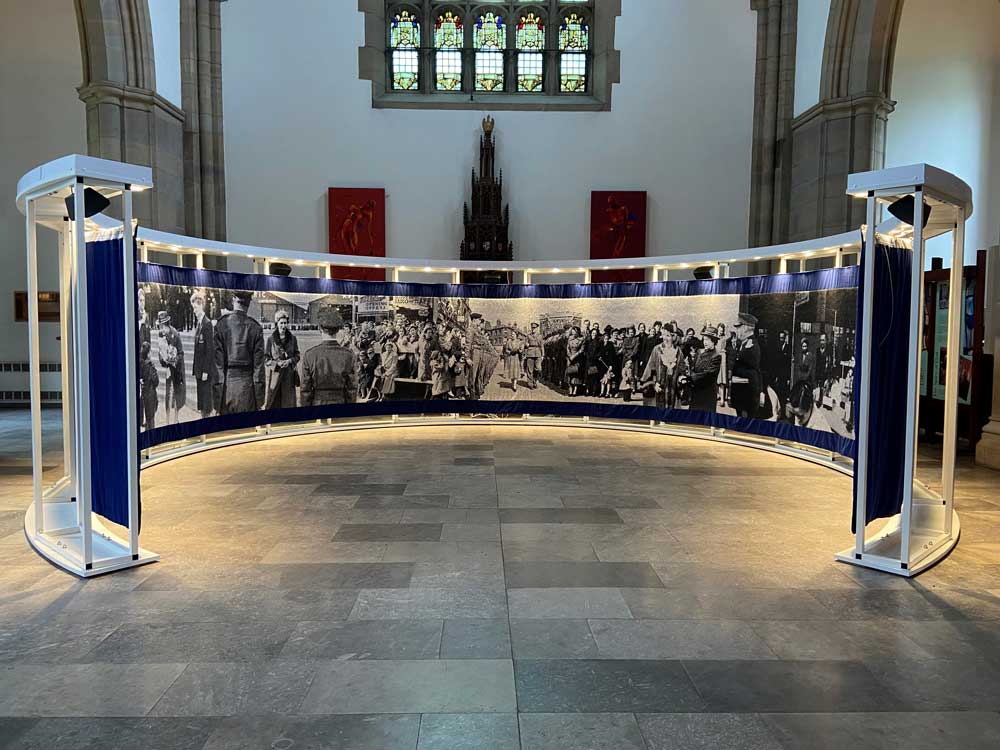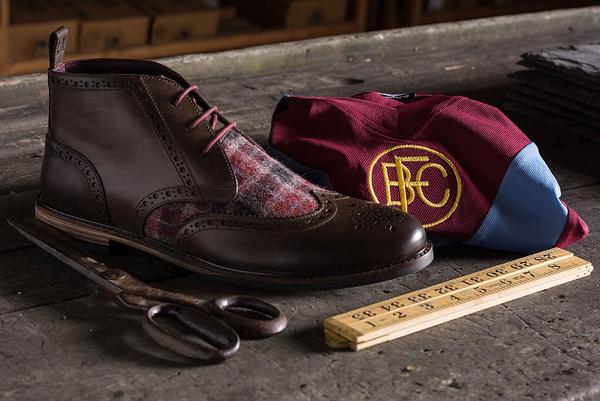Fabric Fit for The King

We were delighted to have been asked to participate in the development of the Anointing Screen used during The King’s Coronation Service on Saturday 6th May 2023 at Westminster Abbey
The Anointing Screen has been designed and produced for use at the most sacred moment of the Coronation, the Anointing of His Majesty The King. The Anointing takes place before the investiture and crowning of His Majesty. The Dean of Westminster pours holy oil from the Ampulla into the Coronation Spoon, and the Archbishop of Canterbury anoints the Sovereign on the hands, chest and head. It has historically been regarded as a moment between the Sovereign and God, with a screen or canopy in place given the sanctity of the Anointing.
The screen combines traditional and contemporary sustainable embroidery practices to produce a design that speaks to His Majesty The King’s deep affection for the Commonwealth. The screen has been gifted for the occasion by the City of London Corporation and City Livery Companies.
David Collinge, Chair of the Textile Committee at the Worshipful Company of Weavers and our Chairman, was part of the design group tasked with the development of the screen. Their research took them to the Tower of London to seek inspiration from The Coronation Regalia and The Chapel Royal, which provided direct inspiration for the design. The centre of the screen takes the form of a tree that includes 56 leaves, representing the 56 member countries of the Commonwealth. The King’s cypher is positioned at the base of the tree, representing the Sovereign as servant of their people.

Monday April 24, 2023. Photo Credit: Victoria Jones/PA Wire
The Making of The Screen
The main fabric, from Australia and New Zealand, is wool and was woven, spun and dyed by AW Hainsworth in Leeds. The applique wool fabrics were spun by Camira Fabrics Ltd (Huddersfield) and R Gledhill Ltd (Delph); woven at Camira Fabrics Ltd (Huddersfield) and our weaving mill, John Spencer Textiles. The keen-eyed amongst you might notice our Witton fabric in Sage featured at the base of the tree! The fabrics were then finished at Camira Fabrics Ltd (Huddersfield) and WT Johnson & Sons Ltd (Huddersfield). The linen applique fabric was again woven at our weaving mill, John Spencer Textiles and finished at H&C Whitehead Ltd (Brighouse).
The individual leaves have been embroidered by staff and students from the Royal School of Needlework, as well as members of the Worshipful Company of Broderers, Drapers and Weavers. As well as heritage craft, contemporary skills and techniques have formed part of this unique collaboration.
The outline of the tree has been created using digital machine embroidery by Digitek Embroidery. This machine embroidery was completed with sustainable thread, Madeira Sensa, made from 100% lyocell fibres. The threads used by the Royal School of Needlework are from their famous ‘Wall of Wool’ and existing supplies that have been collated over the years through past projects and donations. The design incorporates more than one million individual stitches. These were hand-embroidered onto base fabrics, which were woven here in the UK, specifically in the North of England, an area at the forefront of the UK’s textile industry.
The Anointing Screen is supported by a wooden pole framework, designed and created by Nick Gutfreund of the Worshipful Company of Carpenters. The oak wooden poles are made from a windblown tree from the Windsor Estate, which was originally planted by The Duke of Northumberland in 1765. The wooden poles have been limed and waxed, combining traditional craft skills with a contemporary finish.
The Anointing Screen was designed by iconographer Aidan Hart and brought to life through both hand and digital embroidery, managed by the Royal School of Needlework. The central design takes the form of a tree which includes 56 leaves representing the 56 member countries of the Commonwealth. The King’s cypher is positioned at the base of the tree, representing the Sovereign as servant of their people. The design has been selected personally by The King and is inspired by the stained-glass Sanctuary Window in the Chapel Royal at St James’s Palace, which was gifted by the Livery Companies to mark the Golden Jubilee of Queen Elizabeth II in 2002. The script used for the names of each Commonwealth country has been designed as modern and classical, inspired by both the Roman Trojan column letters and the work of Welsh calligrapher David Jones.




